Starting at just $199 for the 8-gigabyte model, going up to $249 for double the capacity, the Nexus 7 is clearly an aggressive effort by Google to push Android in the tablet space and an attempt to counter Amazon's Kindle Fire. Google has good reason to go after the Kindle Fire: Amazon's own touchscreen tablet, released less than a year ago, essentially hijacked Google's work on the Android platform to make its own forked tablet operating system.
In countering the Kindle Fire, Google's Nexus 7 is an indisputable success. While the $199 price point was essentially the main selling point for the slow and limited Kindle Fire, the Nexus 7 would be a compelling device for consumers looking for a 7-inch tablet at prices much higher than the $199 Google is asking. Unlike the Kindle Fire, the Nexus 7 has adequate horsepower to do most of the activities users have come to expect with a tablet.
But because of its smaller screen — particularly its narrow width when used in portrait mode, which is the default orientation — the Nexus 7 feels like a device that is better suited for reading e-books or light Web browsing. The device's form factor, combined with a relative lack of enticing tablet-specific applications for Android, simply puts it in a different class of device — and an entirely different market segment — than Apple's market leading iPad.
User experience and hardware
If first impressions are everything, the packaging of the Nexus 7 stumbles right out of the gate. Attempting to slide the box cover off and get to the tablet is an unnecessarily difficult task thanks to a strange packaging choice. We weren't the only ones to encounter this issue, as the video below clearly demonstrates.
Once it's finally out of the box and up and running, the most noticeable feature of the Nexus 7 is how snappy and responsive the device is, thanks to optimizations in Android 4.1 "Jelly Bean," plus the Nvidia Tegra 3 quad-core processor and a full gigabyte of RAM. While previous versions of Android and older Android hardware had a noticeable lag in user interface responsiveness, the Nexus 7 feels akin to what iPhone and iPad users are already accustomed to.
On page 2 of 4, more on the hardware, including performance, weight and battery life
Unlike with Apple's heavier, larger iPad, which needs the larger bezel in order to be held without touching the display, the smaller Nexus 7 can get away with a thinner bezel on the sides and still be comfortably held without inadvertently touching the screen. The bezel on the top and bottom of the device is noticeably larger than on the sides when in portrait mode, despite the lack of dedicated hardware buttons below the screen like Apple has on its iOS devices.
Comparing the iPad and Nexus 7 head to head, the greatest advantage Google's tablet has is its weight. Apple's new iPad with Retina display weighs in at 1.44 pounds, while the Nexus 7 is 0.75 pounds, making it even lighter than the 0.9-pound Kindle Fire.
The Nexus 7 also offers the kind of battery life iPad users have come to expect. Like with Apple's tablet, we found we can go several days without needing to recharge the Nexus 7, even with regular daily use.
The display packs in 216 pixels per inch, which is not as high resolution as the new iPad with Retina display, but still makes for a pleasant reading experience.
Other hardware features of the Nexus 7 include a rear speaker, a headphone jack on the bottom, a Micro-USB charging and syncing port on the bottom, and two microphones. The device lacks a rear-facing camera, which may bug some users, but didn't strike us as much of an issue.
It's also worth noting that the Nexus 7 has physical volume buttons on the side, next to the screen lock button. Ordinarily this wouldn't be much of an inclusion, but the lack of hardware volume buttons on the Kindle Fire was an inexplicable omission from Amazon's touchscreen tablet.
The Nexus 7 also has a slightly exposed magnetic spot on its side that will allow for use of a magnetic screen cover, much like Apple has offered since the iPad 2. Inside, the Nexus 7 also has an NFC chip that allows the device to be used with Google Wallet compatible pay stations.
On page 3 of 4, software, apps and content
Software, apps and content
As the Nexus 7 runs Jelly Bean, the latest major release of Android, it comes preinstalled with Google's Chrome browser. Browsing the Internet on the Nexus 7 works as expected, in an experience largely identical to using Chrome on iOS devices, including automatic syncing of open tabs and bookmarks.
As iPad users, we found the digital navigation buttons at the bottom screen in Android took some getting used to. When using the onscreen digital keyboard, particularly when in landscape mode, we frequently found ourselves accidentally tapping the home button at the bottom of the touchscreen display when we meant to press the keyboard located just above it. Apple's dedicated hardware home button on the iPad is a better design choice in this respect.
Speaking of landscape mode, there's another strange, inexplicable quirk with the Nexus 7 that we encountered: The auto-rotate screen feature was not enabled by default. This was addressed by a relatively easy fix, by simply enabling the feature under the "Accessibility" section in Android's Settings. However, the question must be asked: Why isn't this enabled out of the box? The answer may be the Nexus 7 feels best used in portrait mode, due to its relatively small screen and narrower-than-iPad 16-to-10 portrait mode.
Even when auto-rotate is turned on, it's only available in applications that support it. The Nexus 7's Android home screen cannot be operated in landscape mode — only portrait. Users will likely want to run a third-party launcher to enable use of the home screen in landscape mode.
Applications remain the Achilles' heel of Android tablets. While there are plenty of options to download in the Google Play store, almost none of them feel like they were designed to take full advantage of the larger screen of the Nexus 7. Even many of the native applications found in Android 4.1 give the impression that they have just been stretched to fill up the screen.
While applications are limited, content on Android is competitive enough to go toe-to-toe with Apple's iTunes as well as Amazon. While the selection at Google Music isn't as broad (you can't purchase The Beatles or Metallica, for example), users can upload their own library, including non-DRM iTunes tracks, to their Google Music account for cloud storage.
The best argument for a 7-inch tablet may be e-books. It's here again that the thin width of a 16-to-10 ratio display and the light weight of the Nexus 7 shine, allowing a user to hold the device with one hand if they choose. In our view, the weight is probably the biggest knock against Apple's current iPad.
While the smaller size of the Nexus 7 is good for e-books, it's less than idea for digital magazines, which must be shrunk down too much to fit the small 7-inch screen. As with on the iPad, too many magazines for the Nexus 7 are essentially PDF-style scans of the same printed product. While this is problematic enough on the iPad, it requires even more inconvenient zooming and scrolling on the Nexus 7.
Making the Nexus 7 an even greater value beyond its $199 price is the fact that Google is currently offering all customers a $25 credit to its Google Play store. This is an obvious effort by Google to get Android users into the idea of purchasing applications for its mobile operating system, something users of Apple's iOS App Store already do in droves. While the selection and quality of applications for Android doesn't compete with Apple, a free $25 credit to purchase anything from Google, including music and books, is a welcome addition that sweetens the pot even more.
On page 4 of 4, thoughts on an "iPad mini," conclusion and final score
A different market
Despite a current lack of dedicated Android tablet apps, the Nexus 7 is a compelling piece of hardware. While the Kindle Fire felt like its main selling point was the low $199 price point, Google's Nexus 7 goes beyond its low cost and provides relatively powerful hardware inside a well-built package. The truth is, the Nexus 7 would still be an attractive product at an even higher price point.
That said, this device is no iPad, and it doesn't even feel like it was made to compete with Apple's market dominating tablet. The narrow screen feels best suited for primarily reading books with the occasional Web browsing and app usage, which pits the Nexus 7 as more of a Kindle competitor than an iPad challenger.
While the Nexus 7 is easy to recommend for anyone looking for a tablet in the smaller 7-inch class, it would be inadvisable for anyone who can wait to buy in to this market segment now. Apple is widely expected to debut its own smaller iPad later this year with a 7.85-inch display that will be larger than the Nexus 7 and Kindle Fire, but still considerably smaller than the 9.7-inch iPad.
Having spent time with the Nexus 7 and felt how responsive the device is, it's easy to see how a smaller iPad would be a big seller. A powerful tablet in a compact form factor feels like a device meant for different uses than a full-sized iPad. If Apple can produce a smaller iPad that is significantly lighter than the current model, allowing for the device to be easily held with one hand, we'd welcome such a product, even without sandpaper in the box.
Rating
The Good
- A bargain at $199 with $25 in free Google Play credit
- Android 4.1 Jelly Bean and the quad-core processor are responsive and smooth
- Small and light enough to be held with one hand
- The screen is good for its size, but it's no Retina display
The Bad
- Android tablet apps are still lacking
- Apple's rumored "iPad mini" looms on the horizon
 Neil Hughes
Neil Hughes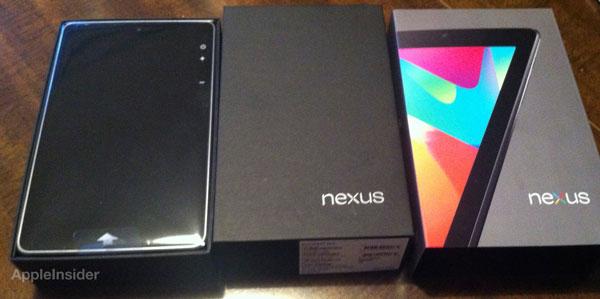
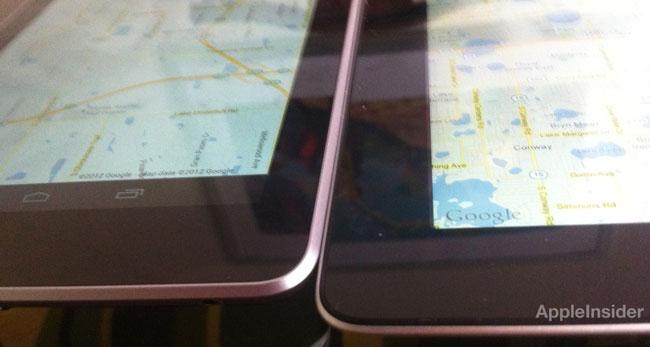
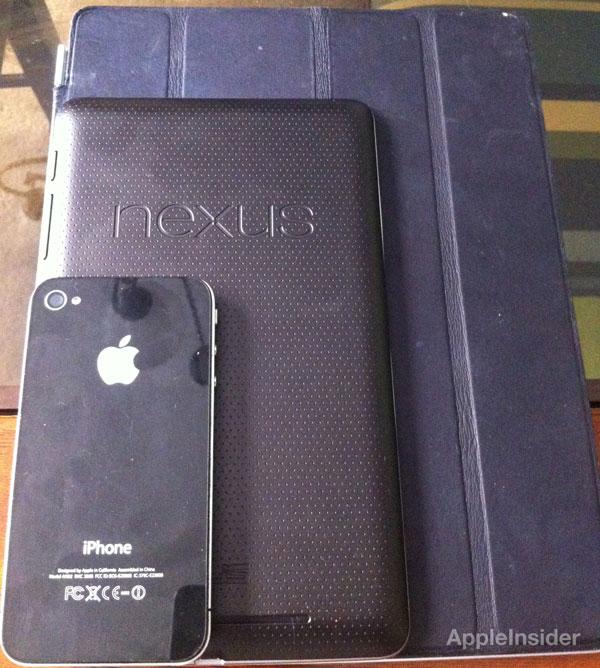
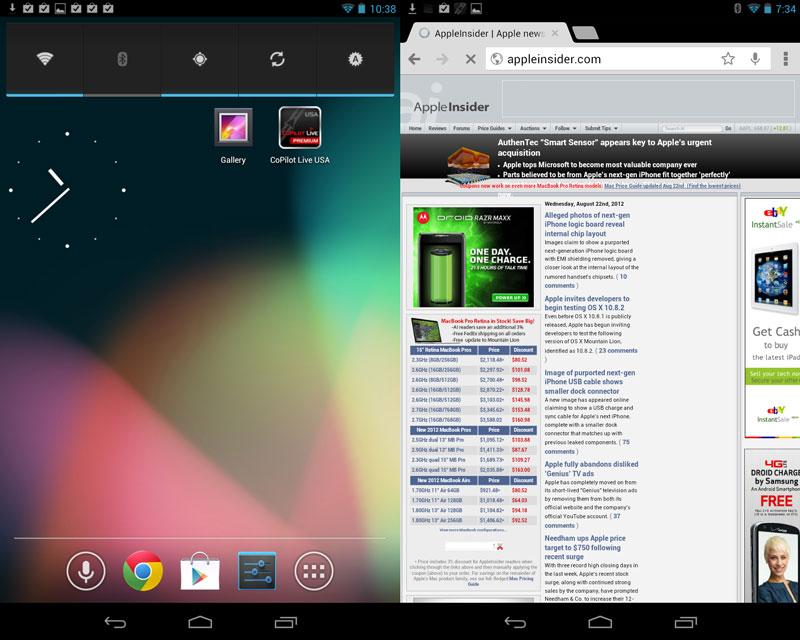
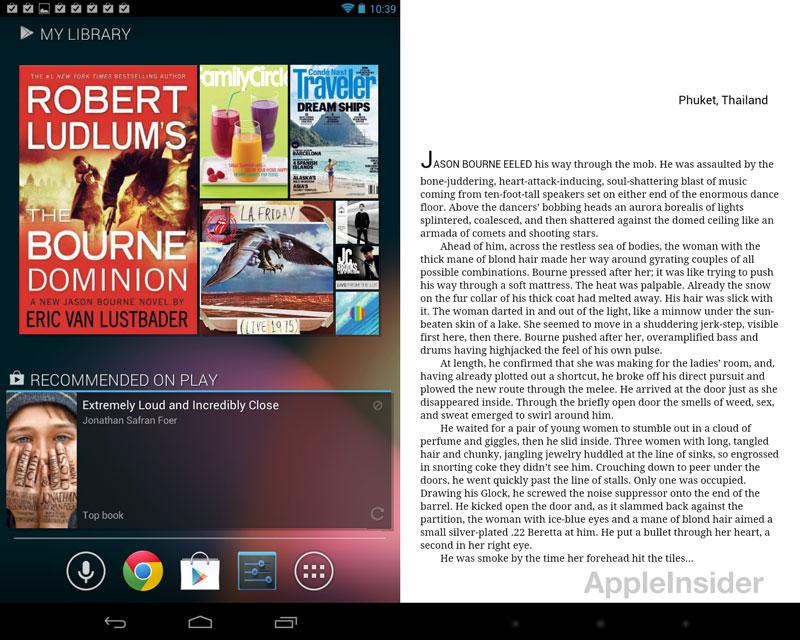
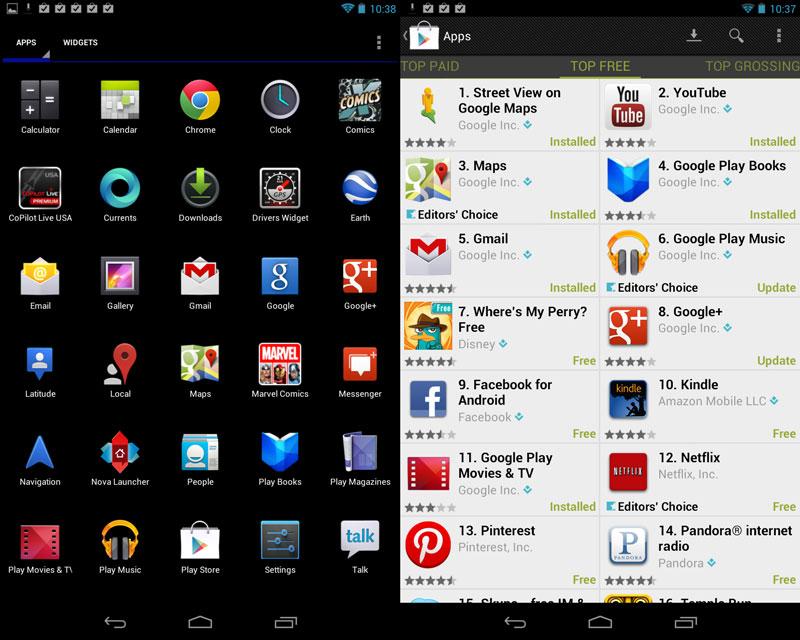
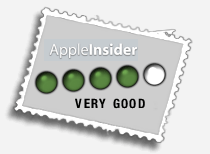







-m.jpg)






 Malcolm Owen
Malcolm Owen
 William Gallagher
William Gallagher
 Thomas Sibilly
Thomas Sibilly
 Wesley Hilliard
Wesley Hilliard
 Marko Zivkovic
Marko Zivkovic


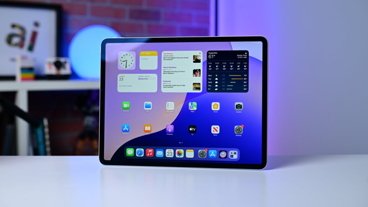









116 Comments
Impressively unbiased review. The Nexus 7 is a fantastic piece of hardware and software. I love that your only negatives are about it are android apps and the iPad mini. I actually think the android apps are more of a plus than a negative. All current android apps run full screen natively right out of the box on the Nexus 7. Something that the iPad mini might not be able to say. That being said, do you think apple can(will) compete on price? $199 is quite cheap. If the iPad mini is $299 I'd go for a Nexus 7. If it's $199, I'll take the iPad mini.
Impressively unbiased review. The Nexus 7 is a fantastic piece of hardware and software. I love that your only negatives are about it are android apps and the iPad mini. I actually think the android apps are more of a plus than a negative. All current android apps run full screen natively right out of the box on the Nexus 7. Something that the iPad mini might not be able to say. That being said, do you think apple can(will) compete on price? $199 is quite cheap. If the iPad mini is $299 I'd go for a Nexus 7. If it's $199, I'll take the iPad mini.
Personally i think apple with hit the $299 mark, just my guess.
I have 2 android tablets & an iPad, motorola xoom & the samsung galaxy tab 7.7, honestly i haven't found one app (android) that feels like it takes advantage of the screen size (not including games) they really feel like stretched phone apps.
just for fun i'll take some screen shots in a sec just to compare them.
Ps. i liked the review, i really wanna give jb a play now see how it feels different to ics
A one who's owned a Nexus 7/16gb sunce the day it was released, I can say (without reservation) that it's [U]the 7inch Tablet Done Right[/U], with exceptional ergonomics, build-quality, and easily the smoothest, most advanced/cohesive mobile operating system yet conceived - Brilliant Device at an almost 'unbelievable' Price Point.
I bought one for my wife. She was using my iPad 2 (32gig) as an e-reader. A $600 device for reading. So I wanted to her get something cheaper but yet, could do a little more than just reading kindle books. I broke down and bought this android device. As it turns out, it's great for her and yes the interface is very snappy. Great for reading and the occasional facebook and web browsing. Im actually impressed with it. I personally would like a different form factor as Im used to the iPad aspect ratio. But for $199, if my iPad suffered a terrible death. Maps on it is way better than iOS 6, lets hope the official release gets it right.
I would consider the Nexus as a cheap replacement...Until the iPad mini, IF, there is going to be such a thing.
Oh and she likes to too. However, I think she's only installed 2 apps on it. That's the very reason why i got it for her, the iPad was overkill for reading ebooks.
Impressed with the review... I wish there wasn't so much bad blood between the two camps.